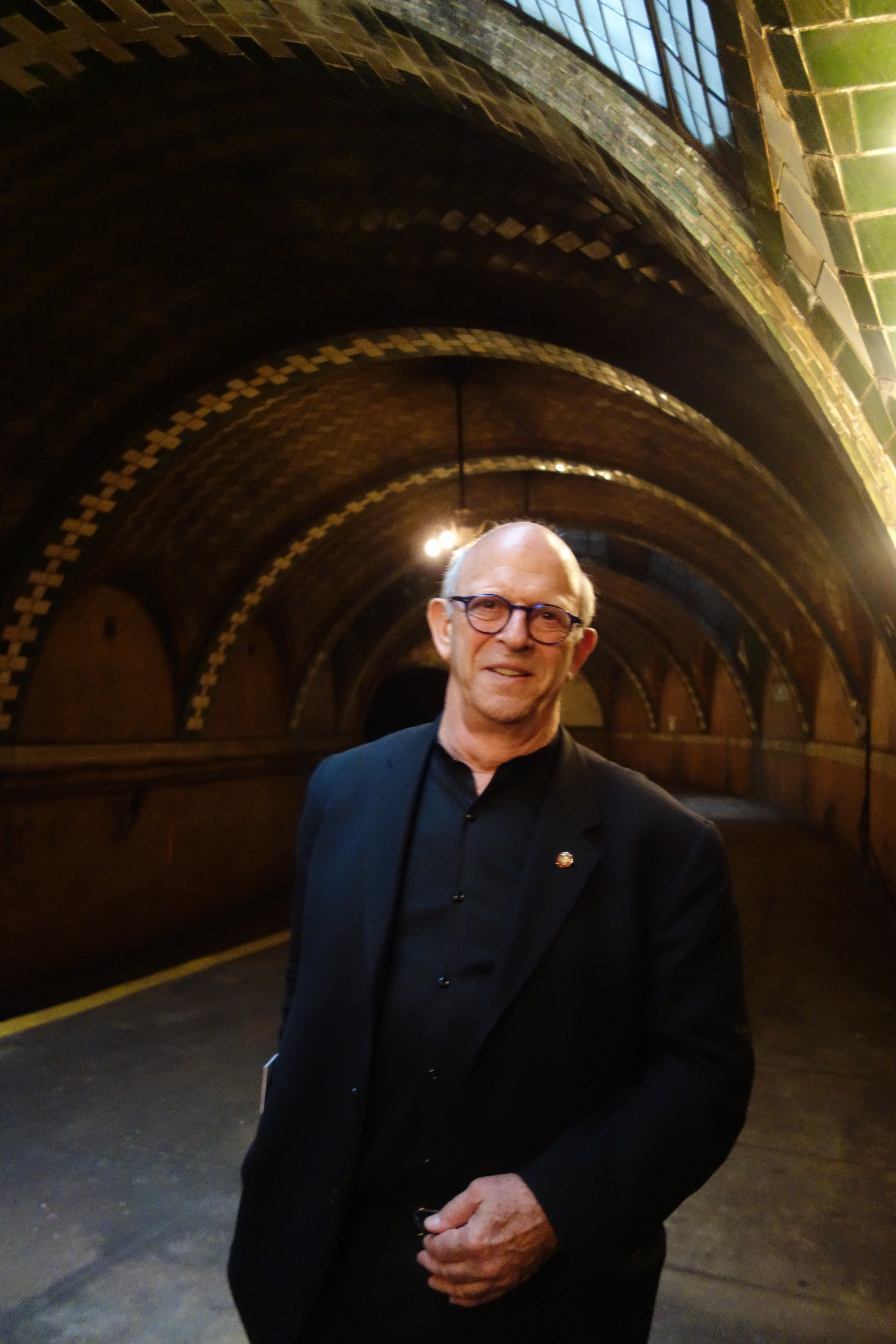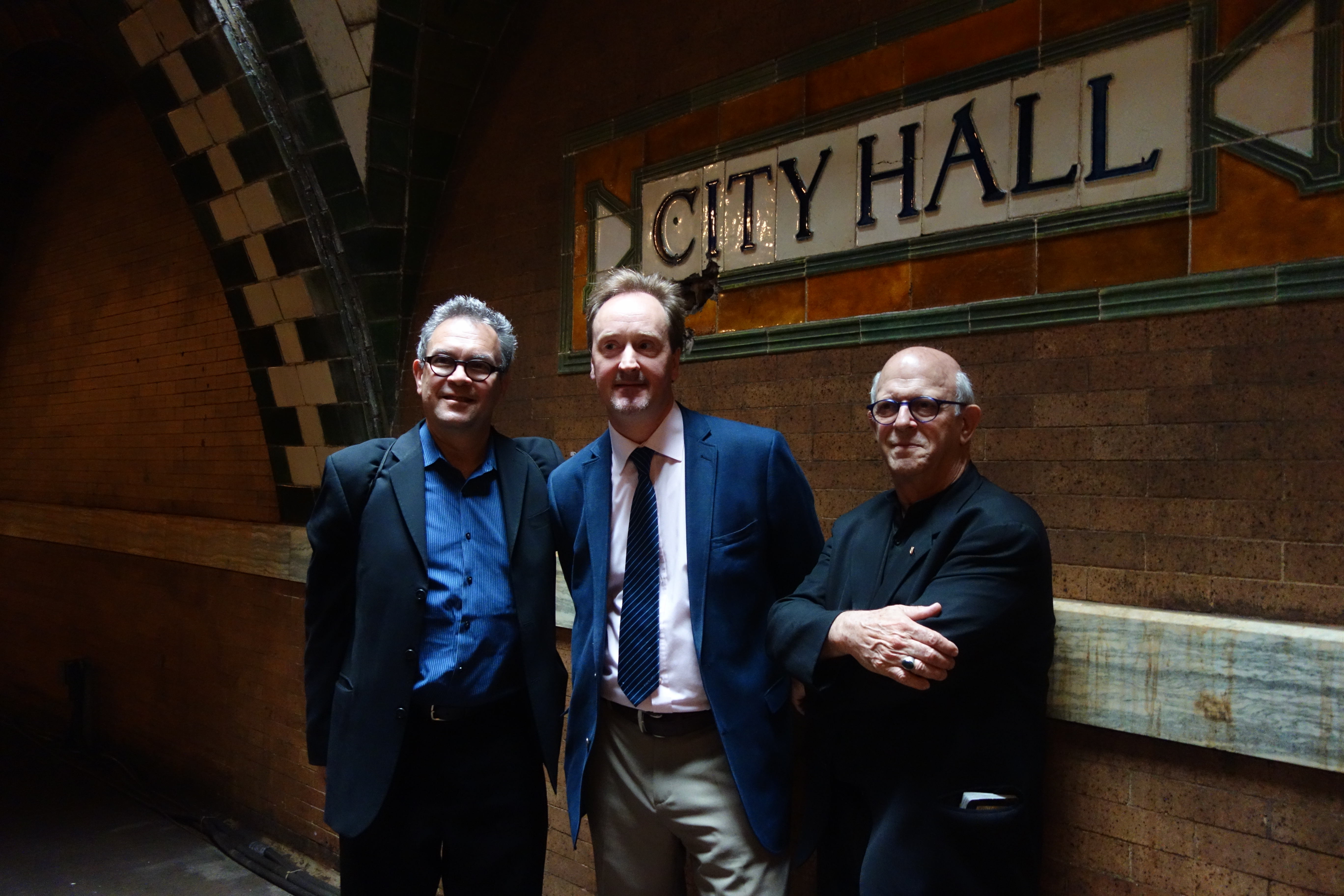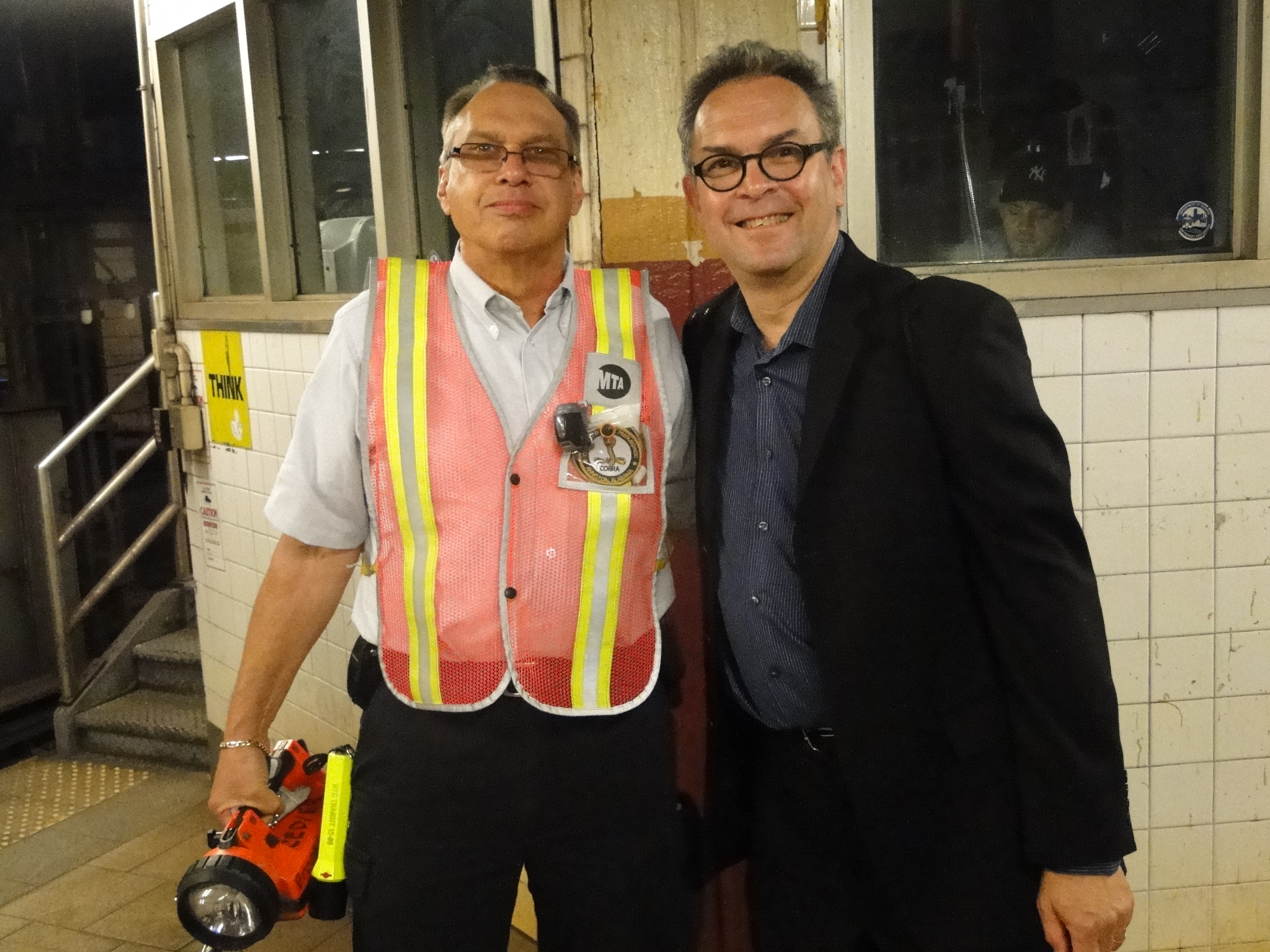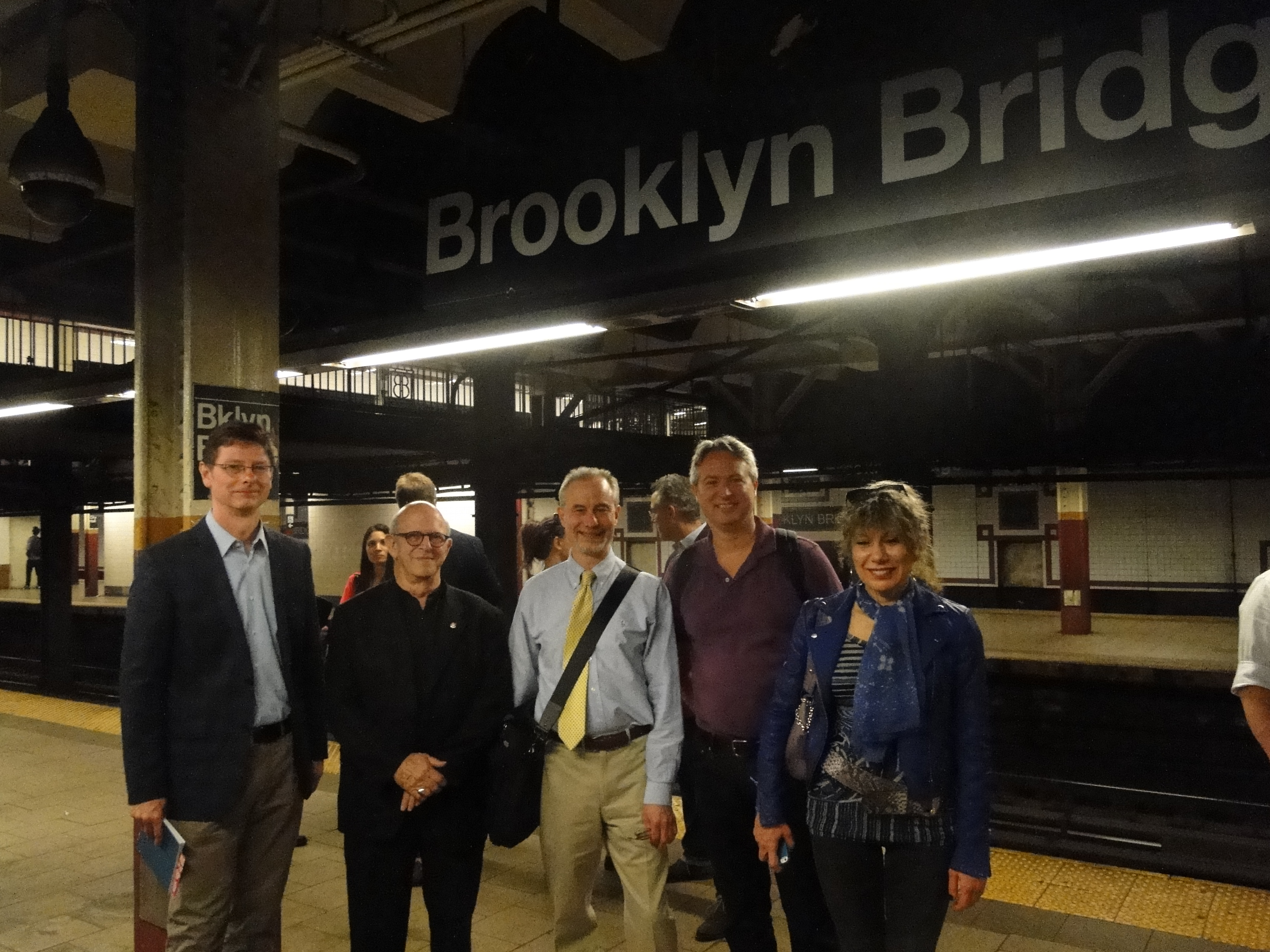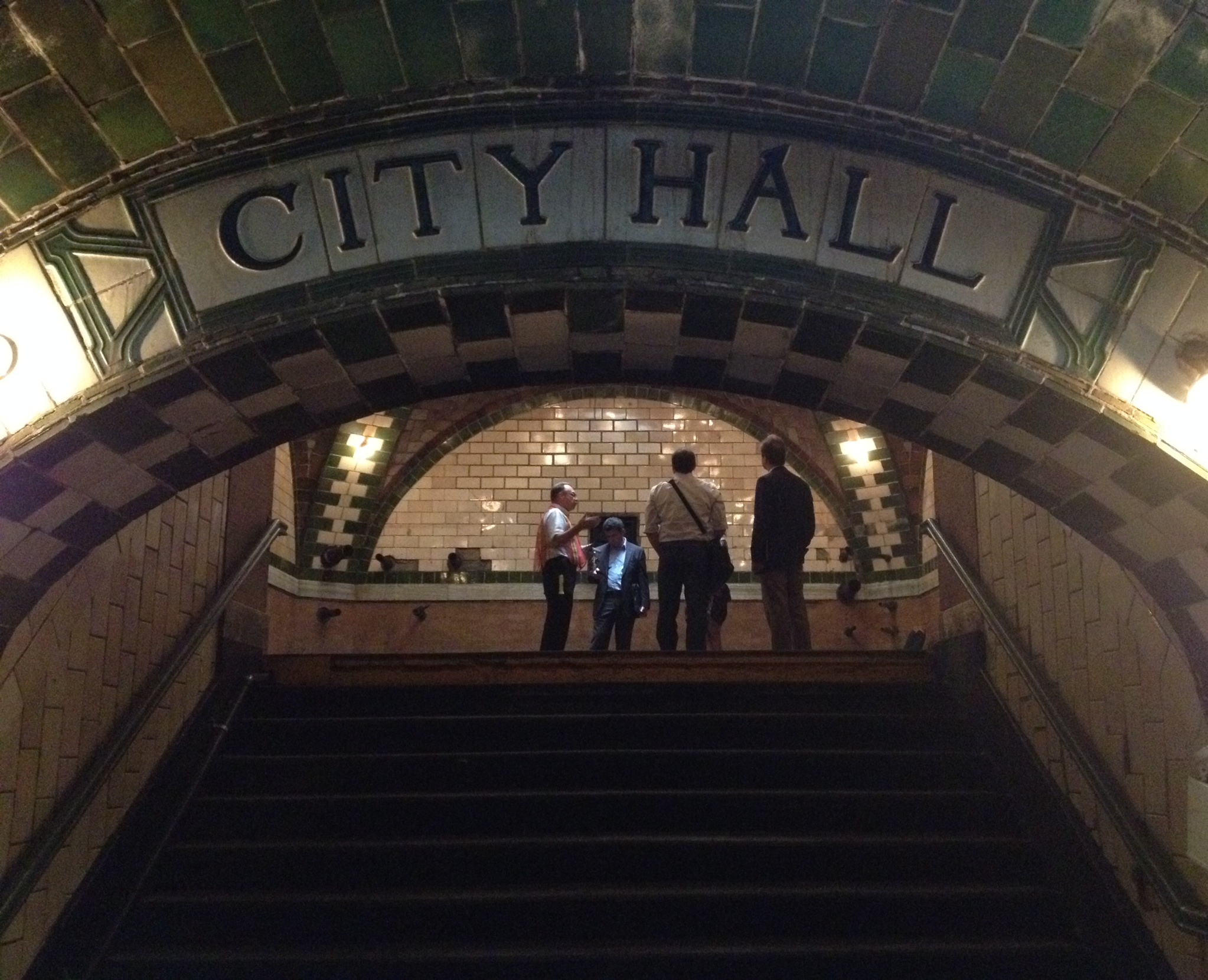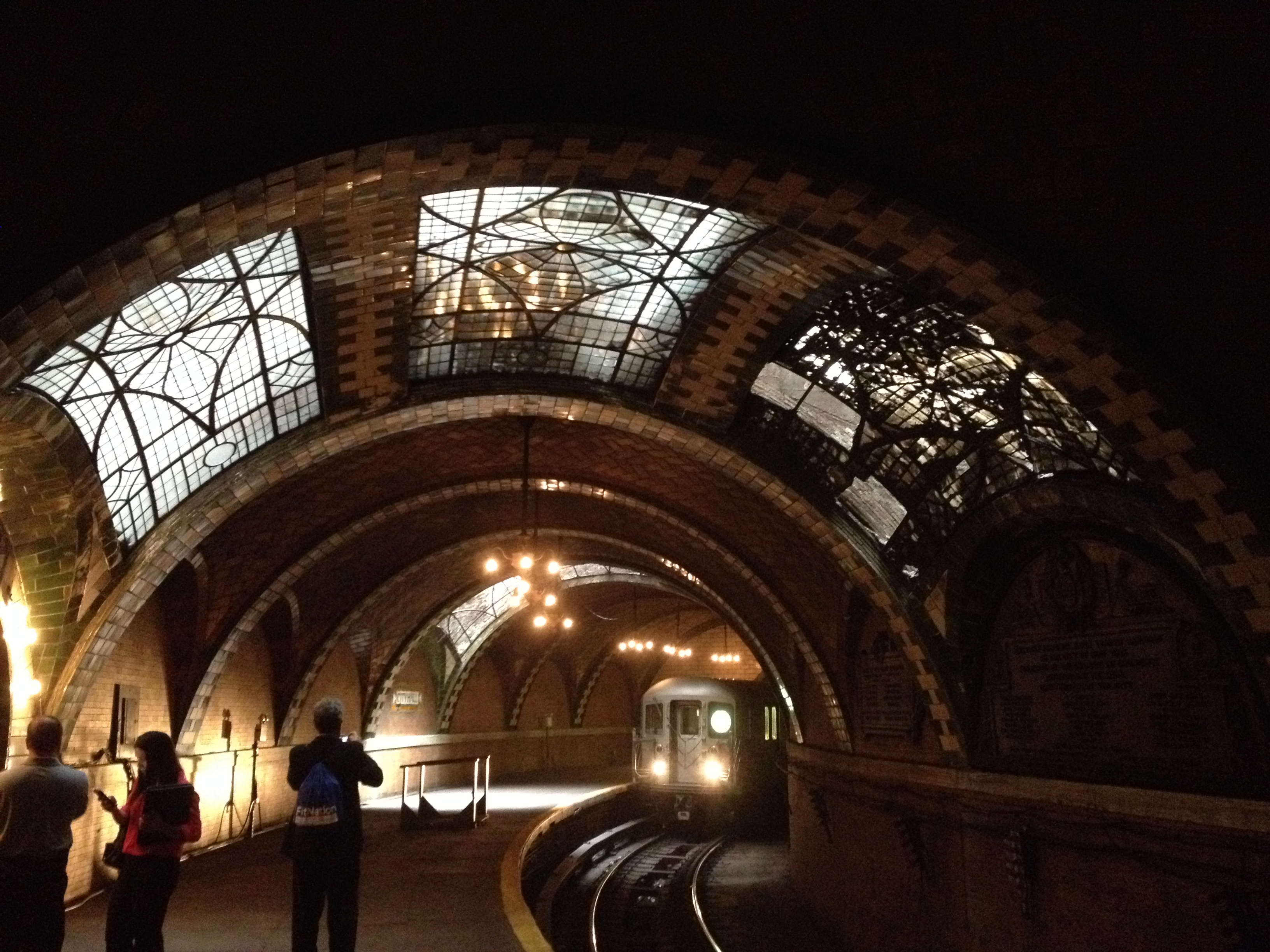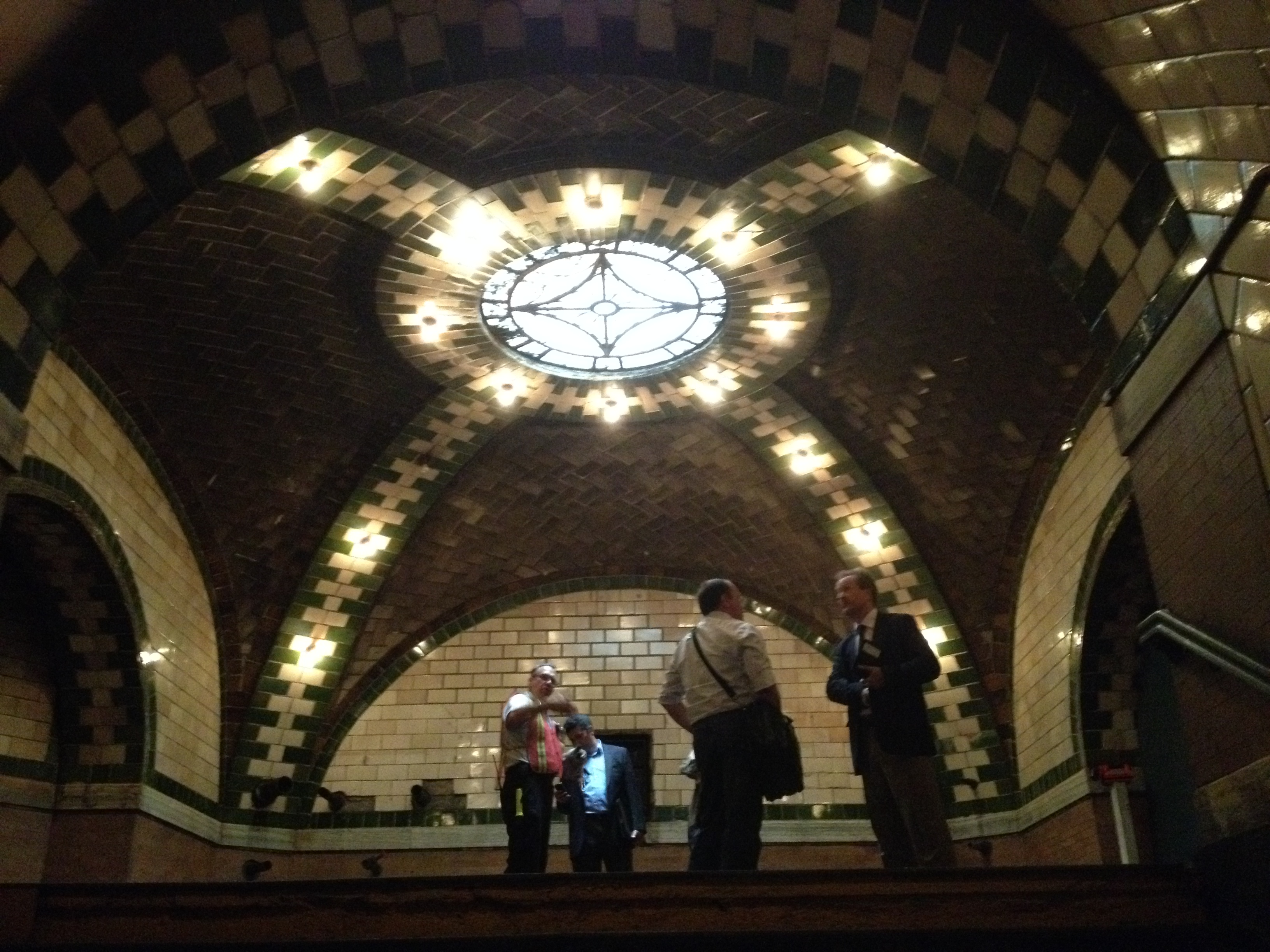by: Camila Schaulson Frenz
Known mostly through the images like those prominently on display at the Museum of the City of New York’s (MCNY) exhibition “Palaces for the People: Guastavino and the Art of Structural Tile,” the secret hideaway of the Teenage Mutant Ninja Turtles has been glimpsed by a few curious New Yorkers looping around on the #6 train at Brooklyn Bridge Station and explored by a lucky handful of (mostly) New York Transit Museum members. On 06.05.14, presidents and members of AIA’s local New York chapters boarded an empty #6 train and toured the abandoned City Hall Station. Led by the MTA’s affable Frank Klimasz, the tour proved the aphorism “not all subway stations are created equal” correct.
When City Hall Station opened in 1904, the southern terminus of the Interborough Rapid Transit Company (IRT) was the crown jewel of the nascent system. The nontraditional curved platform is bedecked in tiled green and white archways, once-sparkling chandeliers, and intricate glass skylights that dramatically light the underground space. The plaques that commemorate the construction of the underground train system honor architects Heins & LaFarge of St. John the Divine fame, but omit Rafael Guastavino, MCNY’s unsung hero and the true mastermind behind the station’s design (and, coincidentally, the cathedral’s 12-story vaults). Walking through the station, the collective feeling was one of nostalgia: “Why don’t we have spaces like this anymore?”
Despite the station’s beauty, Klimasz explained, it was closed and boarded up in 1945. Its curved platform did not allow for the IRT’s new extended subway trains. Additionally, the line’s original gate cars had steps that cantilevered over the platform. The new side door trains would have put passengers in danger as they stepped over the gap to the curved platform. Near its end, the station only served around 600 passengers, as most subway-goers preferred the nearby Brooklyn Bridge Station.
AIANY Executive Director Rick Bell, FAIA, standing in the glistening domed mezzanine at the center of the platform, formerly the fare control area, asked Klimasz about the possibility of opening the site to the public. According to Klimasz, the city made plans in 1995 to restore the site and turn it into part of the New York Transit Museum. Other ideas floated around included sound-proofing the station and turning it into a restaurant or café. With the tragedy of 9/11 and increasing security concerns, however, the plans were scrapped, as the station sits directly under the front steps of City Hall. While it may be inaccessible today, but you can still head over to MCNY and snap a selfie in front of a monumental image of the station.
When Klimasz initially asked Bell and AIANY President Lance Jay Brown, FAIA whether they wanted “the nickel or the dime tour,” they didn’t expect our experienced MTA guide to also lead us through the labyrinthine passages hiding behind Brooklyn Bridge Station’s unassuming white doors. After watching (and hearing) a number of #6 trains speed past us as we explored the City Hall Station platform, Klimasz took our intrepid group to the depths of the station, showing us the remains of a pre-1840 fort beneath the Brooklyn Bridge’s support ramps. One of the great stone arched vaults was once a cellar for the Pol Roger Champagne Company. Unfortunately, today these vaults mainly house maintenance materials, the brand’s lion-flanked logo faded and hidden in the dark.
In an era where we value the subway system’s speed and efficiency, beauty has become a secondary concern. Inspired by AIANY’s 2014 presidential theme “Civic Spirit: Civic Vision” and the City Hall subway station, we are reminded of the importance of creating public spaces that are both functional and beautiful. It may be time that we stop asking ourselves, “Why don’t we have spaces like this anymore?” and start asking how we can have such spaces again.
The tour group included: New York’s local AIA presidents, Lance Jay Brown, FAIA, AIA New York Chapter; Ida Galea, AIA, AIA Brooklyn; William Zambrano, AIA, AIA Brooklyn; and Jeff Geary, AIA, AIA Staten Island, joined by AIANY leaders including AIANY Executive Director Rick Bell, FAIA; AIANY 2014 President-Elect Tomas Rossant, AIA; AIANY Historic Buildings Committee co-chairs Caterina Roiatti, AIA, NCARB and John S. Arbuckle, Assoc. AIA; AIANY Transportation and Infrastructure Committee co-chairs Jeffrey Dugan, AIA, and Robert Eisenstat, AIA. Also in attendance were Andrew Pennington of Porcelanosa USA, Julie Trebault of the Museum of the City of New York, Clemence Mailly, a museology student from Montreal, and Ricardo Vasta.








